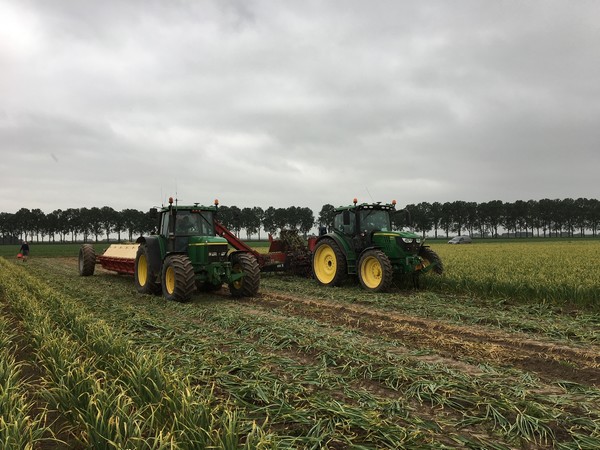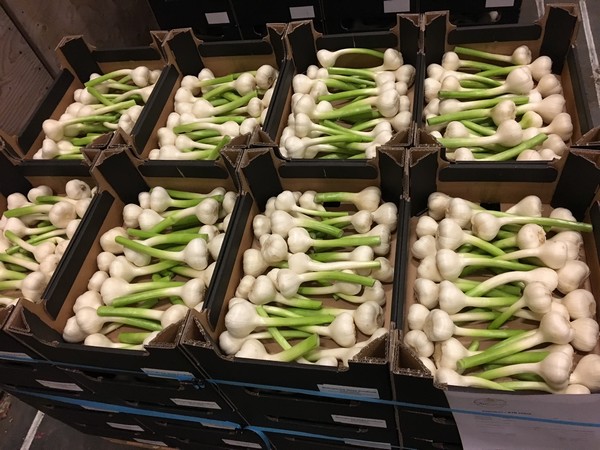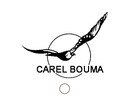“The fresh garlic niche is gaining popularity, so the market’s growing”

Garlic cultivation is usually associated with countries south of the Netherlands. This crop, however, does well in that country. And there are a handful of growers who cultivate it. Bas Groeneveld of TruGarlic is one of these. He began cultivating started organic fresh garlic in 2015. And he founded the theTruGarlic company along with Sjaak Twisk. Next week, he’ll start harvesting 22 million garlic bulbs.

“Growing garlic is similar to growing tulips. The garlic is planted between late October and mid-November. It then remains in the ground through the winter and spring. The garlic clove roots out over the winter and continues to grow in the spring. It’s harvested sometime around the Summer Solstice,” Bas explains.
“I hadn’t seen any fresh organic garlic in the supermarkets. So, I decided to cultivate it. It fits in well with the growing fresh, healthy and sustainable trends. This product’s popularity has increased recently. The Dutch climate is also extremely suitable for this crop.”
TruGarlic sells most of the garlic to retail suppliers or retailers themselves. About 30% remains in the Netherlands. The rest goes to other European countries.

Competing on quality
Bas works closely with Carel Bouma too. Carel owns Biologisch Poot- en Plantgoed. Carel, too, sees that fresh and dried garlic cultivation is on the rise in the Netherlands. As is the competition. “Bulk garlic quantities enter the Dutch market from China. That makes it difficult for Dutch growers to compete,” says Carel.
“But they can distinguish themselves through quality.” Farming must meet the relatively high standards set by Naktuinbouw. This organization monitors propagation material quality. That’s on behalf of the Dutch Ministry of Agriculture, Nature, and Food Quality.

Labor-intensive cultivation
Growing organic, fresh garlic is labor-intensive on multiple levels. Weeding takes a lot of time, and during harvesting, much is done by hand. “That’s to avoid damaging the garlic,” says Carel. This product is harvested by lifting it with a clamping band system. The garlic is pulled out of the ground by its leaves. The bulb is left untouched and, thus, undamaged.

Post-harvest, the root and part of the green stem are manually clipped. They then peel the bulb so that a clean white bulb remains. Bas has recently invested a lot in storage capacity and mechanizing the weeding process. That’s to reduce the time that takes. With more storage space, it’s possible to deliver fresh garlic for up to six months. “Once you open a cold store, the garlic’s shelf life decreases. I now have multiple refrigerated storage areas. I can, therefore, deliver the fresh garlic for longer,” concludes Bas.
For more information: Bas Groeneveld
Bas Groeneveld
TruGarlic
Tel: +31 (0) 620 378 821
Email: info@trugarlic.nl
Website: www.trugarlic.com
Carel Bouma
Biologisch Poot- en Plantgoed
Tel: +31 (0) 651 068 038
Email: carel@biologischpootgoed.nl
Website: www.biologischpootgoed.nl
Source: Fresh Plaza

